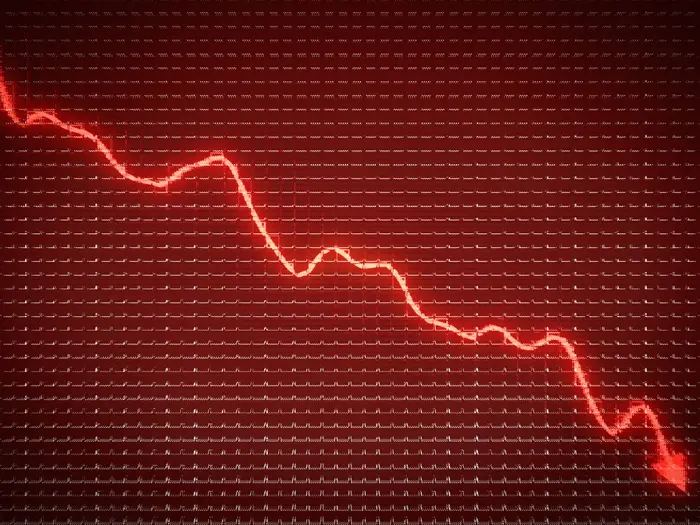The global demand for wheat remains high, making it one of the most important agricultural commodities traded worldwide. Investors interested in diversifying their portfolios with agricultural stocks often look into wheat stocks. In this guide, we will walk you through the steps of buying wheat stocks, how to analyze them, and key factors to consider before making a decision.
Understanding Wheat Stocks
Before diving into the process of buying wheat stocks, it’s important to understand what they represent. Wheat stocks are shares of companies involved in the production, processing, or distribution of wheat. These companies might include agricultural producers, grain traders, or food manufacturers that use wheat as a primary raw material.
Why Invest in Wheat Stocks?
Wheat is a staple food crop that has a steady and growing global demand. Investing in wheat stocks can be an excellent way to diversify a portfolio, especially if you are looking to hedge against inflation or reduce risk in other sectors. The prices of wheat can fluctuate based on several factors, such as weather conditions, trade policies, and global supply-demand dynamics.
Types of Wheat Stocks
There are various ways to gain exposure to wheat stocks:
Agricultural Companies: These companies directly grow and harvest wheat.
Commodity Trading Companies: These businesses buy, sell, and trade wheat on the open market.
Food Manufacturers: Companies that process wheat into products such as bread, pasta, and cereals.
Exchange-Traded Funds (ETFs) and Mutual Funds: These financial products may hold wheat-related stocks or commodity futures.
Step-by-Step Process to Buy Wheat Stocks
1. Research Wheat-Related Companies
The first step in buying wheat stocks is identifying the companies that are involved in wheat production, processing, or distribution. You can start by researching agricultural companies, grain traders, and food manufacturers that have wheat as a key component of their business.
Key Companies to Consider
Some of the major companies involved in wheat production include:
Archer Daniels Midland Company (ADM): A global leader in agricultural processing, ADM is involved in the production and trading of wheat.
Bunge Limited (BG): A multinational agribusiness company that processes wheat and other grains.
Cargill, Inc.: Another leading global player in the agriculture and food production sectors, with significant wheat-related operations.
General Mills (GIS): A well-known food manufacturer that produces wheat-based products, including cereals and snacks.
Research Factors
When researching companies, consider the following factors:
Revenue Sources: Does the company rely heavily on wheat for its revenue, or is it just a part of a broader portfolio?
Geographical Exposure: Is the company exposed to wheat markets in key production regions, such as the U.S., Canada, Russia, or Australia?
Growth Potential: Assess whether the company is investing in new technologies or expanding its wheat-related operations.
2. Analyze Financials and Performance
Once you’ve identified potential wheat stocks, it’s crucial to analyze their financial performance. Here are some key metrics to focus on:
Revenue and Profit Margins: Look at how much revenue the company generates from wheat-related activities and whether it’s increasing over time.
Debt Levels: Companies with excessive debt might face challenges, especially if wheat prices experience volatility.
Cash Flow: Strong cash flow is essential for a company’s ability to reinvest in its business and weather economic downturns.
Stock Performance: Review the historical performance of the stock, paying attention to its price trends during periods of market volatility.
3. Decide on the Type of Wheat Investment
There are different ways to invest in wheat stocks, depending on your risk tolerance and investment goals:
Direct Stock Purchase
Investing directly in the shares of wheat-related companies is the most straightforward approach. If you believe that the company’s operations and growth prospects will benefit from rising wheat prices, purchasing individual stocks might be a good option.
Exchange-Traded Funds (ETFs)
If you want exposure to a broader range of wheat stocks but don’t want to research individual companies, an ETF focused on agricultural commodities or wheat might be an ideal choice. These funds hold a portfolio of wheat-related companies and can be less risky than investing in individual stocks.
Futures Contracts
Another way to invest in wheat is by purchasing wheat futures contracts. However, this is a highly speculative form of investment and is typically used by advanced investors who are comfortable with the risks involved.
4. Open a Brokerage Account
To buy wheat stocks or ETFs, you’ll need a brokerage account. Choose a brokerage that offers access to agricultural stocks, ETFs, or futures contracts, depending on your preferred investment method.
Types of Brokers
Full-Service Brokers: These brokers offer research, investment advice, and portfolio management services. They might charge higher fees but are a good option for those who prefer professional assistance.
Discount Brokers: These brokers are cheaper and provide access to a wide range of stocks, ETFs, and other investment products. However, they typically don’t offer personalized investment advice.
Online Trading Platforms: Many online platforms cater to self-directed investors and offer lower fees. Popular platforms include TD Ameritrade, E*TRADE, and Charles Schwab.
5. Purchase Your Wheat Stocks
Once your brokerage account is set up, you can place an order to buy wheat stocks. There are two primary types of orders you can place:
Market Orders: This is the most common type of order, where you buy the stock at the current market price.
Limit Orders: You can set a specific price at which you’re willing to buy the stock. The order will only be executed if the stock reaches that price.
Make sure to place your orders carefully, considering factors such as the stock’s liquidity, current price, and your overall portfolio strategy.
6. Monitor Your Wheat Stock Investments
After purchasing wheat stocks, it’s essential to monitor your investments regularly. Wheat prices are subject to fluctuation due to several factors such as:
Weather Conditions: Droughts, floods, and other weather-related events can have a significant impact on wheat production and prices.
Supply and Demand: Changes in global supply and demand for wheat can influence stock prices.
Global Trade Policies: Trade restrictions or tariffs imposed by wheat-producing countries can affect the prices of wheat and the profitability of wheat-related companies.
Regularly reviewing news and financial reports can help you stay updated on the key developments in the wheat market.
Key Factors to Consider When Investing in Wheat Stocks
1. Market Volatility
Agricultural commodities like wheat can be volatile. Prices can swing based on seasonal trends, geopolitical events, and natural disasters. Therefore, it’s essential to be prepared for price fluctuations and understand the risks before investing.
2. Global Wheat Production
Wheat production is concentrated in a few countries, including the United States, Russia, China, and India. Global production levels can influence the supply of wheat and, consequently, the performance of wheat-related stocks. Keeping an eye on global production forecasts can help predict price trends.
3. Trade Policies and Regulations
Government regulations and trade policies have a significant impact on the wheat market. For instance, export restrictions or subsidies for domestic wheat production can influence global wheat prices. Be sure to monitor any changes in trade agreements, tariffs, and subsidies that may affect wheat-related companies.
4. Currency Fluctuations
As wheat is traded globally, currency fluctuations can also affect the profitability of wheat-related companies. A weaker U.S. dollar, for instance, can make U.S. wheat exports cheaper, benefiting U.S.-based wheat companies. Conversely, a strong dollar can make wheat more expensive for foreign buyers, potentially impacting sales and profits.
Conclusion
Investing in wheat stocks can be an excellent way to diversify your portfolio and gain exposure to one of the world’s most important commodities. By researching wheat-related companies, analyzing their financial health, and understanding the broader agricultural market trends, you can make informed investment decisions. Whether you choose to invest in individual stocks, ETFs, or futures contracts, it’s important to stay updated on market conditions and remain prepared for the inherent volatility that comes with agricultural investments.
Related topics:


























